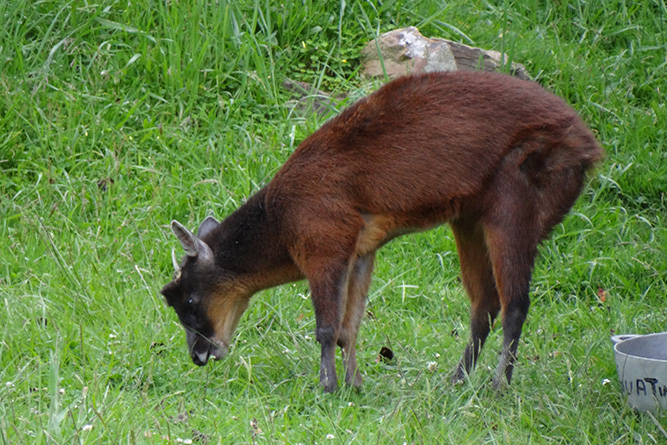The Mérida Brocket is a remarkable deer species that calls the forests of South America home. This elusive creature, with its distinctive traits and intriguing behaviors, has long piqued the interest of wildlife enthusiasts. Join us on a journey to uncover the secrets of the Mérida Brocket.
Table of Contents
Species Data
- Class: Mammalia
- Order: Artiodactyla
- Family: Cervidae
- Scientific Name: Mazama bricenii
- Life Span: Typically 8-12 years
- Height: Approximately 35-50 cm (14-20 inches)
- Weight: Around 18-30 kg (40-66 pounds)
Description
The Mérida Brocket, scientifically known as Mazama bricenii, is a small deer species celebrated for its unique features. This brocket stands out with its reddish-brown fur, slender build, and short, unbranched antlers.
Appearance
These enchanting deer have a compact frame, short legs, and a graceful demeanor. Their reddish-brown coat, devoid of markings, adds to their elegance.
Behavior
Mérida Brockets are primarily solitary creatures, preferring the seclusion of the forest undergrowth. They are known for their cautious and elusive nature, making sightings a rare treat.
Habitat
These elusive deer are denizens of the lush montane forests of the Mérida Andes in Venezuela, where their ability to navigate steep terrain serves them well.
Diet and Nutrition
Mérida Brockets are herbivores, predominantly feeding on leaves, fruits, and tender shoots. Their browsing habits play a crucial role in shaping the ecosystem.
Mating Habits
During the breeding season, males engage in vocalizations and scent marking to attract potential mates.
Mating Behavior
- Reproduction Season: Typically occurs from November to January.
- Pregnancy Duration: Approximately 220 days.
- Baby Carrying: Mothers are attentive caregivers to their fawns.
- Independent Age: Fawns gradually gain independence at around 6-8 months.
- Female Name: Doe
- Male Name: Buck
- Baby Name: Fawn
5 Fun Facts for Kids
- Mérida Brockets are exceptional jumpers and can gracefully navigate through the forest undergrowth.
- They have keen senses, including excellent night vision, which helps them evade predators.
- Mérida Brockets are known to be quite vocal, producing various sounds to communicate with each other.
- These deer play a vital role in seed dispersal within their habitat, contributing to forest regeneration.
- Conservation efforts are essential to protect the Mérida Brocket and its fragile montane habitat.


